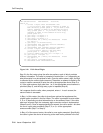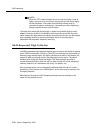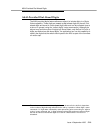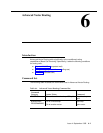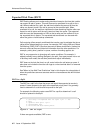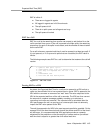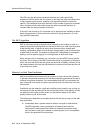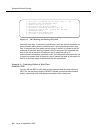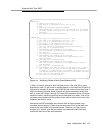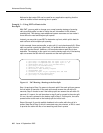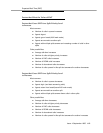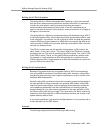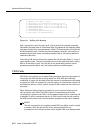
Expected Wait Time (EWT)
Issue 4 September 1995
6-5
To prevent inaccurate predictions when there is no historical information,
administer the “Expected Call Handling Time” field on the Hunt Group
form. The value in this field is then used in place of the missing historical
data.If the value of this field does not accurately reflect the call handling
times of the split, EWT predictions may be inaccurate until some call
history is generated. The algorithm normally requires about 30 queued
calls to be answered from a split priority level before it reaches its
maximum accuracy.
You can change the value in the “Expected Call Handling Time” field by
executing a change hunt group command. Changing the value will not
disrupt EWT predictions by overwriting EWT history. The value is stored
and used the next time a reset system 3 or 4 is executed.
■ Low call volume applications.
Split priority levels where the rate of removal from queue is very low can
only be predicted with limited accuracy.
■ Sites with frequent staffing changes.
Although EWT immediately adjusts for all types of staffing changes, since
predictions may have already been made for calls waiting in queue, those
past predictions will have been based on staffing information which is now
out of date. Therefore, scenarios where large staffing changes are
continually happening can only be predicted with limited accuracy.
■ Staffed agents who rarely answer calls to a split.
The EWT algorithm takes account of agents in multiple splits in its
calculation. However, suppose there are many agents who are assigned
to a split but spend most of their time answering calls in their other splits. If
a large number of these agents are moved to or from the split, then EWT
for this split may be temporarily inaccurate until it adjusts to those
changes.
■ Applications with widely varying call handling times.
If the majority of calls to a split are handled within a narrow range of times
the accuracy of any predictor will be much greater than that for a split
where call handling times are widely different.
Examples
Example 1 — EWT Routing and Passing Wait
to a VRU
The following vector illustrates routing based on the wait time of a split, as well as
passing wait data to the VRU. Wait time is only given to the caller if the caller is
expected to wait a total of more than 60 seconds in queue. Callers who would
wait more than 10 minutes are told to call back later.



